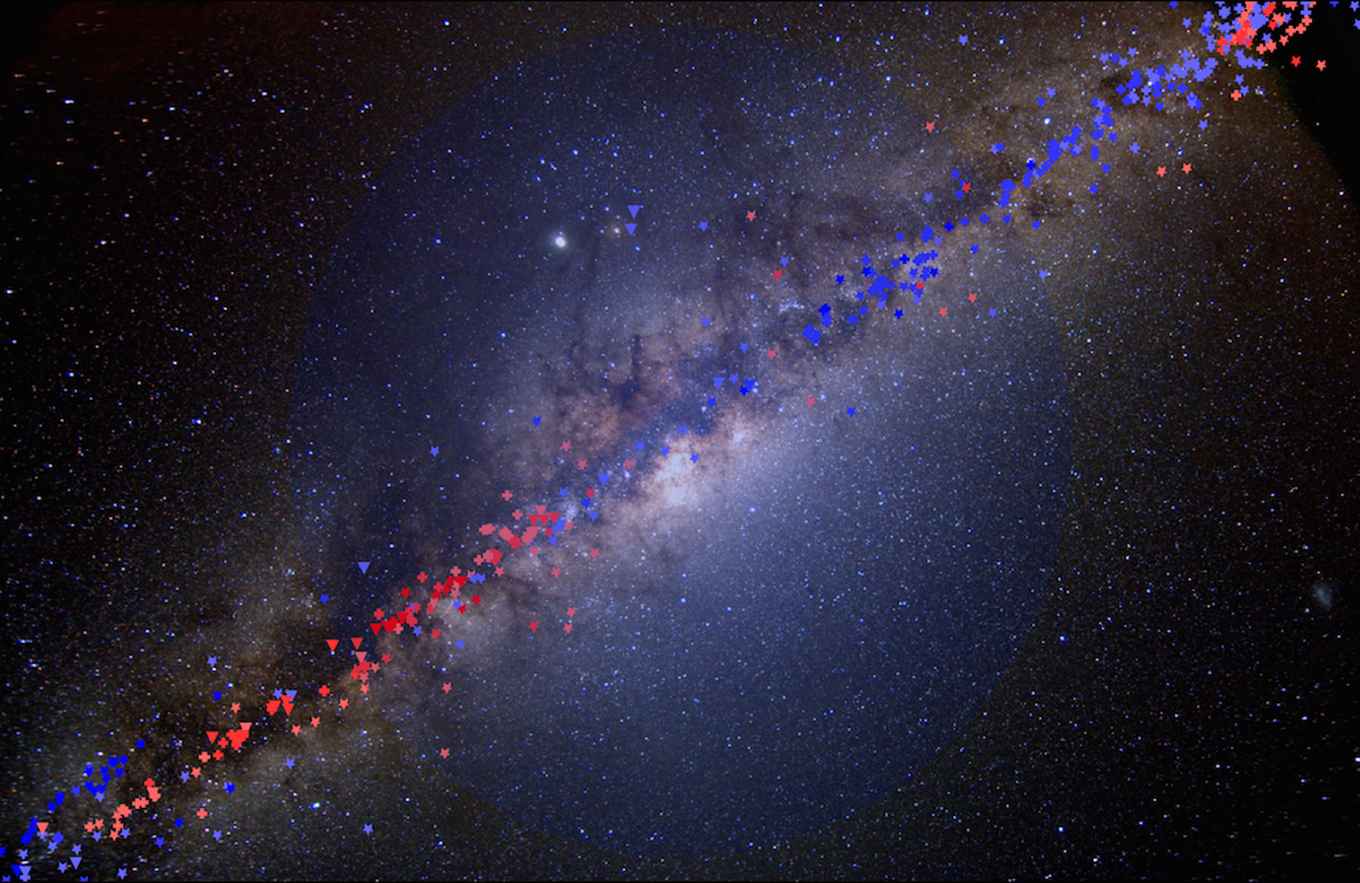Dark matter in the inner Milky Way
9 February 2015

The universe is pervaded by invisible dark matter, which is about five times more abundant than the ‘ordinary matter’ comprised of atoms. Its existence in galaxies was established in the 1970s with a variety of techniques, including the measurement of the rotation speed of gas and stars, which provides a way to effectively ‘weigh’ the host galaxy and determine its mass.
This technique can also be applied to our own Galaxy. Although the existence of dark matter in the outer parts of the Milky Way is well established, it has historically proven very difficult to confirm the existence of dark matter within the innermost regions, where the solar system is located, due to the difficulty of measuring the rotation of gas and stars with the needed precision.
Fabio Iocco of ICTP-SAIFR, Miguel Pato of the U. of Stockholm, and Gianfranco Bertone created the most complete compilation of published measurements of the motion of gas and stars in the Milky Way, and compared the measured rotation speed with that expected under the assumption that only luminous matter exists in the Galaxy. Their findings demonstrate that the observed rotation cannot be explained unless large amounts of dark matter exist around us, and between us and the galactic centre.

Gianfranco Bertone, spokesman of the center of excellence in Gravitation and Astroparticle Physics: ‘We anticipate that our results will lead to further developments in astroparticle physics and cosmology. With new upcoming astronomical observations, our method will allow us to measure the distribution of dark matter in our Galaxy with unprecedented precision. This will refine our understanding of the structure and evolution of our Galaxy, and it will trigger more robust predictions for the many experiments worldwide that search for dark matter particles. Our study therefore constitutes a fundamental step forward in the quest for the nature of dark matter.’
References:
Evidence for dark matter in the inner Milky Way, Fabio Iocco, Miguel Pato and Gianfranco Bertone, Nature Physics (online publication 9 February).
doi:10.1038/nphys3237
For Dutch readers:
In de Volkskrant van 9 februari 2015 verscheen een artikel over het onderzoek van Gianfranco Bertone, geschreven door Govert Schilling. Via onderstaande link is het stuk in z'n geheel te lezen.